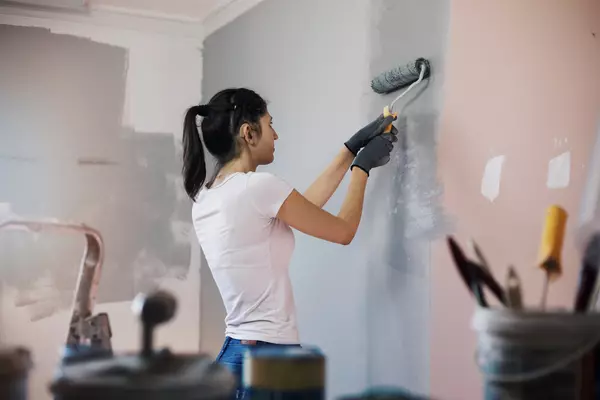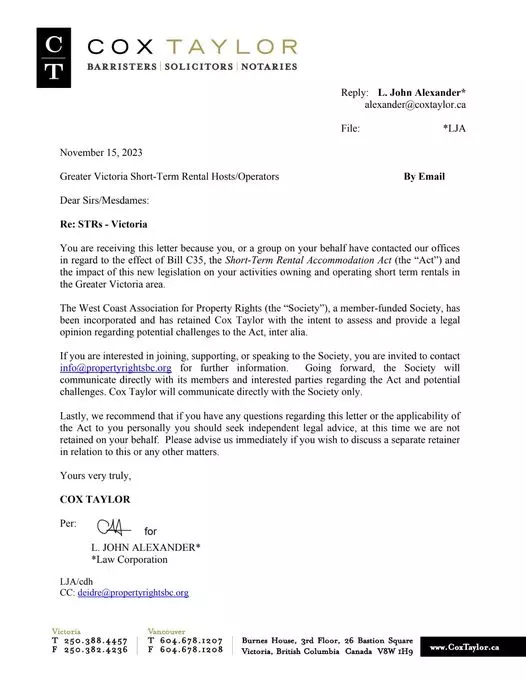
Fall is Here!
Preparing your home for fall As the leaves turn vibrant shades of orange and gold, it’s time to think about preparing your home for fall. This season brings a unique charm, and with it, the need for certain adjustments. These adjustments ensure your home remains cozy and inviting. Autumn home tips can enhance the atmosphere and maintain comfort, making it essential to plan for the upcoming changes in climate. Embracing fall decor ideas not only beautifies your space but also fosters a warm environment as temperatures begin to drop. In this article, we’ll guide you through the crucial steps in home maintenance for fall. This will help you stay proactive and ready for the season ahead. Key Takeaways Prioritize home maintenance to ensure a safe, warm environment. Adopt autumn home tips for a more inviting atmosphere. Utilize fall decor ideas to reflect the changing season. Stay mindful of seasonal climate changes to prepare accordingly. Create a welcoming environment for family and guests this fall. Embracing the Autumn Aesthetic Autumn's arrival brings a unique charm, inviting you to transform your space into a cozy home. Embracing the autumn aesthetic begins with selecting the right fall colors for your decor. You can create a warm and inviting atmosphere that complements the changing landscape outside. Shades of orange, deep reds, and earthy browns form the perfect palette, enhancing your indoor environment's beauty. Choosing Fall Colors for Your Decor When choosing fall colors, focus on rich tones that reflect the natural beauty around you. Consider these options for your decor: Warm oranges and spicy reds evoke a sense of warmth and cheer. Golden yellows mimic the foliage and add brightness to your spaces. Deep browns provide grounding elements, adding a rustic charm. These fall colors can be featured prominently in your seasonal decor. From throw pillows and blankets to wall art and decorative accents, each choice contributes to an inviting atmosphere. This atmosphere embraces the spirit of autumn. Adding Seasonal Touches Incorporating seasonal touches can elevate your decor and create a truly inviting experience. Here are some ideas to personalize your cozy home: Display pumpkins or gourds in varied sizes and colors for a classic fall centerpiece. Hang a fall-themed wreath on your door, welcoming guests with seasonal flair. Use rich textiles such as wool throws and textured cushions to add warmth and comfort. Each of these elements helps to craft an atmosphere where you can unwind and enjoy the beauty of the season. Embrace your unique style by allowing your personality to shine through in your autumn decor choices. Make your home an inviting haven during this beautiful time of year. Preparing Your Home for Fall As fall's crisp air and vibrant colors arrive, getting your home ready is crucial. Preparing your home for fall boosts comfort and energy efficiency. By examining both inside and outside, you can dodge issues during the cold months. Importance of Seasonal Preparation Fall home preparation offers substantial advantages. Preparing for winter reduces unexpected expenses and boosts safety. A well-prepared home stays warm, creating a cozy space in the cold. A thoughtful seasonal preparation plan ensures a stress-free winter. Checklist for Fall Readiness A detailed seasonal checklist is key for a smooth fall transition. Key tasks include: Inspecting your heating system for optimal functionality. Checking insulation in attics and basements to retain heat. Cleaning gutters and downspouts to prevent water damage. Preparing outdoor spaces by securing furniture and tools. Testing smoke alarms and carbon monoxide detectors. Weatherproofing Your Home As the weather cools, the need to weatherproof your home becomes more pressing. Proper weatherproofing ensures warmth, reduces heating costs, and boosts energy efficiency. Sealing drafts and ensuring windows and doors are well-maintained are key to a cozy home. Sealing Drafts and Cracks Sealing drafts is crucial for weatherproofing your home. Even small gaps can cause significant heat loss, impacting your heating system's performance. Here are some strategies to consider: Using caulk to seal cracks around windows and doors Applying weatherstripping to door frames Inspecting electrical outlets and switches for gaps and sealing them Inspecting Windows and Doors Regularly checking your windows and doors is vital for energy efficiency. Look for signs of wear and tear. Fixing any issues can significantly improve insulation. Here are some tips for your inspection: Check for damaged or missing weatherstripping Ensure windows open and close easily without gaps Replace cracked or broken window panes By focusing on sealing drafts and inspecting windows and doors, you can enhance your home's comfort in the cold months. This also boosts its energy efficiency. Maintaining Your Heating System As temperatures fall, ensuring your heating system works efficiently is crucial. Regular furnace maintenance can prevent unexpected breakdowns and improve your home's comfort during the colder months. Taking proactive steps in heating system care can significantly reduce energy costs and enhance indoor air quality. Scheduling Furnace Maintenance It's wise to schedule furnace maintenance with a qualified technician annually. This professional check-up can identify potential issues before they become major problems, saving you from expensive repairs. During maintenance, the technician will inspect: Electrical connections Moving parts for lubrication Safety controls and ignition systems By focusing on furnace maintenance, you ensure your heating system operates efficiently throughout winter. This allows you to enjoy a warm and cozy home when it's needed most. Changing Air Filters Regularly changing your air filters is a simple yet effective task that supports heating system care. Clogged or dirty filters restrict airflow, causing your furnace to work harder. This can lead to increased energy consumption. Change your filters at least every three months. Look out for signs that indicate a filter needs changing, such as: Visible dust and debris Reduced airflow from vents Higher energy bills than usual By keeping up with air filter changes, you can enhance your system's efficiency and improve your home's air quality. Outdoor Preparations for Fall As temperatures drop and leaves change color, outdoor fall preparation is key to keeping your property in top shape. A few critical tasks can protect your home from winter damage. Cleaning Gutters and Downspouts Gutter cleaning is a must for fall maintenance. Leaves, twigs, and debris can clog water flow. If gutters overflow, it can damage your roof, siding, and foundation. Inspect your gutters for blockages and remove any debris. Flush downspouts with a hose to ensure they are clear and functioning properly. Consider installing gutter guards to minimize future buildup. Storing Outdoor Furniture Proper outdoor furniture storage is vital for preserving your patio items. With winter coming, taking care of your furniture can extend its life. Clean furniture thoroughly, removing dirt and stains. If possible, cover items with waterproof tarps or dedicated furniture covers. Store cushions and fabric items in a dry location to prevent mold and mildew. Creating a Cozy Indoor Environment Transforming your spaces into a cozy indoor environment is simple and enjoyable. The right mix of soft textiles and warm lighting techniques can significantly enhance your home's comfort and appeal. Embracing these elements creates an inviting atmosphere perfect for fall evenings. Bringing in Soft Textiles Incorporating soft textiles is essential for cultivating a welcoming ambiance. Consider adding: Throw blankets in rich colors and textures Plush cushions on sofas and chairs Area rugs to add warmth underfoot Cozy curtains that filter soft light These additions not only contribute visual interest but also promote relaxation. They make your indoor space feel more inviting as the temperatures drop. Layering Lighting for Warmth Lighting plays a crucial role in creating a cozy indoor environment. Focus on layering your lighting using warm-toned bulbs in various fixtures: Ambient lighting: Use overhead lights to provide general illumination. Task lighting: Incorporate focused lighting for reading or other activities. Accent lighting: Highlight artwork or architectural features to add depth. Utilizing a mix of these warm lighting techniques helps create a snug atmosphere. It invites you to unwind. Textile Purpose Lighting Type Benefits Throw Blankets Adds warmth and comfort Ambient Creates a cozy feeling in the room Plush Cushions Enhances seating comfort Task Facilitates focused activities Area Rugs Softens hard floors Accent Defines spaces and adds visual interest Cozy Curtains Filters and softens light Ambient Contributes to a warm atmosphere By bringing in soft textiles and layering your lighting strategically, you can achieve a cozy indoor environment. This environment invites relaxation and warmth throughout the fall season. Fall Gardening Tips As the crisp air settles in, preparing your garden for the colder months becomes essential. Fall gardening tips help you ensure a healthy transition into winter. From removing dead plants to mulching, taking these steps now will set the stage for a thriving garden come spring. Preparing Your Garden for Winter Winter garden preparation involves several key actions to protect your plants and soil. Start by cleaning up your garden beds, removing any dead or diseased plants. This minimizes pests and diseases that can linger through winter. Adding a thick layer of mulch helps retain moisture and insulates plant roots during freezing temperatures. Choosing Fall Plants and Flowers Selecting the right fall plants can keep your garden looking vibrant despite the chill. Consider hardy options like chrysanthemums and ornamental kale, which can withstand frost while adding color. You can also plant fall crops such as garlic and kale, which thrive in cooler weather and can be harvested before heavy snow arrives. Fall Plants Characteristics Winter Hardiness Chrysanthemums Bright, colorful blooms Very hardy Ornamental Kale Unique leaf colors Very hardy Garlic Easy to grow, flavorful Very hardy Kale Nutritional powerhouse Frost tolerant Taking these steps ensures a beautiful and productive garden during the fall months and into winter. Remember to plan ahead, so your garden retains its charm even in the late-season chill. Managing Your Fall Budget Effective fall budget management ensures your decor and home maintenance meet your financial goals. Opt for cost-effective decor ideas to add seasonal charm without breaking the bank. Consider DIY projects or repurposing items from previous seasons. This approach not only enhances your home's aesthetic but also aids in fall budget management. Cost-Effective Decor Ideas Fall offers a chance to beautify your home affordably. Here are some budget-friendly decor ideas: DIY Autumn Crafts: Create unique decorations using natural elements like leaves and pinecones. Repurpose Existing Items: Give old decor a new life by repainting or re-styling. Simple Mantle Displays: Use seasonal items you already own to create inviting setups. Thrift Shopping: Hunt for affordable fall-themed decorations at local thrift stores. Budgeting for Heating Costs As temperatures fall, budgeting for heating becomes crucial. Understanding utility rates and estimating expenses based on past usage is key. Here are some heating budget tips to manage expenses: Review Past Heating Bills: Analyze your previous bills to forecast your monthly expenses. Adjust Your Thermostat: Lowering the thermostat by a few degrees can significantly reduce costs. Seal Drafts: Ensuring your home is properly sealed will prevent heat loss and save on heating. Schedule Regular Maintenance: Keeping heating systems in good shape maximizes efficiency and minimizes costs. Implementing these strategies allows you to enjoy the season while keeping costs low. Preparing Your Home for Holiday Guests As the holiday season draws near, preparing your home for guests is essential. Creating a welcoming atmosphere shows your guests how much you value them. Adding inviting scents and thoughtful décor can transform any space into a cozy haven. Creating a Welcoming Atmosphere A pleasant atmosphere significantly influences the mood of your gathering. Here are a few tips to enhance comfort: Use cozy textiles like throw blankets and cushions to add warmth. Incorporate seasonal fragrances, such as cinnamon and pine, through candles or diffusers. Play soft music to create a relaxing background sound. Clearing and Organizing Spaces Effective home organization is crucial for making guests feel at home. Decluttering guest rooms and common areas ensures your space feels open and inviting. Remove personal items from guest rooms to provide space for their belongings. Clear common areas of excess furniture and clutter for better flow. Establish a designated area for coats and shoes to avoid mess. The effort you put into preparing for holiday guests will be rewarded with cherished memories and heartfelt connections. A welcoming home atmosphere and proper home organization are key to a joyful celebration. Tips for a Welcoming Atmosphere Benefits Use cozy textiles Enhances comfort and warmth Incorporate seasonal scents Creates a festive ambiance Play soft music Encourages relaxed conversations Conclusion As fall's colors start to appear, it's crucial to prepare your home for the season. An autumn home tips recap shows that enhancing decor, maintaining the heating system, and creating a cozy atmosphere are key. Every small detail adds to making your home a welcoming space. Weatherproofing, cleaning outdoor areas, and ensuring everything is in order keeps your home warm and inviting. These efforts not only prepare your home for fall but also pave the way for memorable moments with loved ones during the festive season. Fall is more than just a transition; it's an opportunity to enhance your living space. By following these autumn home tips, you'll create a cozy, stylish, and comfortable environment. So, invest time in preparing your home for fall—it's a worthwhile endeavor. FAQ What are some effective autumn home tips for preparing my home for fall? To get your home ready for fall, start by checking your heating system. Then, add seasonal decorations in warm colors like oranges and browns. Lastly, store any outdoor furniture safely. These steps will make your home cozy and energy efficient for the cooler months. How can I enhance the autumn aesthetic of my home? To enhance your home's autumn look, use rich fall colors and textures. Decorate with materials like burlap and wool. Add seasonal touches like pumpkin arrangements and fall-themed wreaths. This will reflect your style and welcome autumn into your home. What are the key elements of an effective fall home preparation checklist? An effective checklist for fall includes inspecting your heating systems and checking insulation. Also, clean your gutters and prepare outdoor spaces. These steps ensure comfort, reduce heating costs, and maintain safety in your home. How can I weatherproof my home effectively? To weatherproof your home, seal drafts and cracks around windows and doors. Use caulking and weatherstripping for this. Regular checks for damage will keep these areas intact, improving energy efficiency and warmth in your home. What should I know about furnace maintenance before winter? Before winter, schedule a furnace maintenance check with a qualified technician. Also, change air filters regularly to improve air quality and heating system efficiency. This will make your home more comfortable. How can I prepare my outdoor spaces for fall? To prepare your outdoor spaces, clean gutters and downspouts to prevent water damage. Store outdoor furniture to protect it from winter. These steps will maintain your outdoor items' appearance and longevity. What are some tips for creating a cozy indoor environment during fall? To create a cozy indoor environment, use soft textiles like throw blankets and cushions. Layer warm lighting for a snug atmosphere. This will make your home the perfect retreat for fall evenings. What should I consider for fall gardening as winter approaches? For fall gardening, prepare your garden for winter by mulching and removing dead plants. Plant fall-specific crops for continued harvest. Choose hardy fall plants like chrysanthemums and ornamental kale to keep your garden vibrant. How can I manage my budget effectively this fall? To manage your fall budget, look for cost-effective decor ideas like DIY projects or repurposing last season's items. Also, understand your utility rates to budget for heating costs accurately. This will help with financial planning during colder months. What are some tips for preparing my home for holiday guests? To prepare for holiday guests, create a welcoming atmosphere with pleasant scents and inviting décor. Clear and organize spaces, especially guest rooms and common areas. This will ensure visitors feel comfortable and at home.

Did you know? - Smoking in a Strata Lot
Did you know? Strata Tips - Smoking Restrictions in Strata Corporations Smoking restrictions have been implemented in many different areas of our society, and strata corporations are no exception. More and more stratas are adopting smoking restriction bylaws or rules, and here’s how they’re doing it. 1. Common Property - The most basic restriction is a ban on smoking on common property. This can either be done by adopting an appropriate bylaw or rule. 2. Limited Common Property - Some strata corporations have also chosen to ban smoking on limited common property through their bylaws or rules, which for a lot of condominium buildings means that residents are not allowed to smoke on their balconies or patios. 3. Within a Strata Lot - The most comprehensive restriction includes banning smoking on the entire property, including within a strata lot. It’s important to remember that strata corporations need to approve a bylaw restricting smoking within a strata lot, as only bylaws, not rules, can govern the use of strata lots. It's also important to remember that even if a specific smoking restriction isn't in place, most stratas have nuisance bylaws. These bylaws prohibit actions that cause a nuisance or hazard to others, which can include smoking that impacts neighbouring residents. If you have any questions about your strata or making a purchase in a strata, you can call me anytime at 250-889-6137.

Renovating A Strata?
Many people intend to renovate their strata lot either before or shortly after moving in. So, what exactly should your clients know about renovating a strata lot? It's crucial they understand the approval process and plan accordingly. If you are unsure whether your planned renovations require strata corporation approval, asking the strata for confirmation is always better. 1. Approval Takes Time. Be Flexible and Patient. Ensure you understand that things tend to move more slowly in the strata world. While not all renovations require approval, many do. The process typically follows these steps: When a buyer purchases a strata lot and becomes the owner, the strata is not obligated to consider or approve any proposed alterations before the buyer becomes an owner. The new owner requests approval from the strata corporation. The strata corporation may require a renovation application form to be completed or ask for details regarding the renovation. The application may require specific details, such as materials being used, contractor details, and confirmation of insurance/WorkSafeBC coverage. The strata council reviews the application/details at their next meeting. If satisfied, the strata council approves the renovation. If not, they request additional information. This process may continue through several meetings until the strata council is satisfied. The strata corporation may require the owner to complete an alteration agreement (also referred to as an indemnity agreement) before starting the renovations. 2. Alteration (Indemnity) Agreements Many strata corporations require owners making improvements to sign an agreement confirming they will, among other things: Abide by the strata corporation’s bylaws. Obtain necessary permits and approvals. Hire appropriate professionals to complete the renovations. Ensure contractors have proper insurance and WorkSafeBC coverage. Take responsibility for future repairs and maintenance. Insure the upgraded components within their strata lot. 3. Read the Bylaws Many strata corporations have bylaws pertaining to renovations that may include: Time limits for reviewing renovation applications. Restrictions on the types of alterations allowed, such as: Flooring bylaws: Requirements for specific underlays, restrictions on certain types of flooring, and/or requirements to cover a certain percentage of the flooring with carpets or rugs. Notification bylaws: Inform neighbours about renovation schedules. Work hours bylaws: Restrictions on when renovations can be carried out. Common property access bylaws: Requirements to use specific building access points, as well as debris containment and clean-up bylaws. Waste bylaws: Requirements to remove construction garbage at the owner’s own cost. Limited common property restrictions: Limitations on the types of changes owners can make to areas, such as balconies. Component restriction bylaws: Restrictions on installing certain components like hot tubs or heat pumps. 4. Special Considerations for Specific Alterations Some alterations, like converting a garage into a living space, require additional approvals and compliance with local building regulations. These may also necessitate amendments to the Schedule of Unit Entitlement and possibly a unanimous vote of the owners. 5. Unauthorized Alterations It's not uncommon for owners to make changes without obtaining the necessary approvals. Strata corporations have several enforcement tools, such as imposing fines, seeking orders for compliance, or even removing unauthorized alterations at the owner's expense. A Buyer could inherit these liabilities when purchasing a strata lot with unauthorized alterations. Therefore, it’s important to obtain and review all documentation pertaining to any alterations made in the strata lot. If you notice alterations that don’t have corresponding documentation, it’s crucial to ensure the strata is aware of and has approved these changes. If approval has not been granted, it may be prudent to ensure the sellers obtain retroactive approval from the strata prior to completion. Remembering these points, you can ensure a smoother renovation process. Patience, thorough planning, and adherence to bylaws are key to successful renovations in a strata setting.
Categories
Recent Posts









